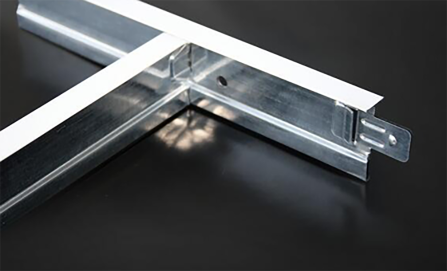- Afrikaans
- Albanian
- Amharic
- Arabic
- Armenian
- Azerbaijani
- Basque
- Belarusian
- Bengali
- Bosnian
- Bulgarian
- Catalan
- Cebuano
- Corsican
- Croatian
- Czech
- Danish
- Dutch
- English
- Esperanto
- Estonian
- French
- German
- Greek
- Hindi
- Indonesian
- irish
- Italian
- Japanese
- Korean
- Lao
- Malay
- Myanmar
- Norwegian
- Norwegian
- Polish
- Portuguese
- Romanian
- Russian
- Serbian
- Spanish
- Swedish
- Thai
- Turkish
- Ukrainian
- Uzbek
- Vietnamese
set. . 11, 2024 01:30 Back to list
Perforated Metal Grid Ceiling Solutions for Modern Spaces
The Advantages of Perforated Metal Grid Ceilings
Perforated metal grid ceilings have become a popular choice in modern architectural design and construction, offering a unique blend of aesthetics, functionality, and versatility. These ceilings, characterized by their array of holes or perforations, provide numerous benefits that make them suitable for various environments, including commercial, industrial, and even residential spaces.
One of the primary advantages of perforated metal grid ceilings is their excellent acoustic performance. The perforations allow sound waves to pass through the metal and be absorbed by strategically placed acoustic materials behind the ceiling. This design minimizes noise reverberation, creating a more comfortable and productive environment, especially in spaces with high foot traffic or machine operations, such as offices, schools, and factories. By controlling sound levels, these ceilings contribute to better communication and concentration, ultimately enhancing the overall user experience.
In addition to their acoustic properties, perforated metal grid ceilings are also aesthetically appealing. They provide a sleek, contemporary look that can complement a wide range of design themes. The variety of patterns and finishes available means designers can easily customize ceilings to fit specific décor needs. Whether opting for a more industrial look with raw finishes or a polished, seamless appearance, the versatility of perforated designs allows for creativity and personalization in any space.
perforated metal grid ceiling

Durability is another significant feature of perforated metal grid ceilings. Unlike traditional ceiling materials that might be susceptible to moisture, mold, or pests, metal ceilings are resistant to such issues. They can maintain their integrity and appearance over time, reducing maintenance costs and prolonging the lifespan of the ceiling system. They are also fire-resistant, providing an additional layer of safety for buildings. This makes them particularly suitable for areas prone to high humidity or where hygiene is a priority, such as laboratories or food processing plants.
Moreover, perforated metal grid ceilings can facilitate efficient air circulation and temperature regulation. The spacing provided by the perforations allows for optimal airflow, which can contribute to improved HVAC efficiency. As a result, buildings can enjoy better thermal comfort while potentially reducing energy costs. This feature is particularly beneficial in large open spaces that require effective climate control.
Sustainability is a growing concern in modern construction, and perforated metal grid ceilings can play a role in eco-friendly building practices. Many manufacturers produce these ceilings using recycled materials or offer designs that allow for easy recycling at the end of their life cycle. Additionally, the durability of metal ceiling systems means they have a longer lifespan than many traditional materials, thus minimizing waste.
In conclusion, perforated metal grid ceilings are a practical and stylish choice for contemporary spaces. Their acoustic benefits, aesthetic flexibility, durability, air circulation capabilities, and potential for sustainability make them an excellent investment for various applications. As architects and designers continue to seek innovative solutions for modern building challenges, perforated metal grid ceilings are likely to remain a favored option that meets both functional requirements and aesthetic aspirations. Embracing this sophisticated ceiling solution can enhance the ambiance and performance of any environment.
-
Transform Interiors with PVC Gypsum Ceiling: A Stylish, Durable, and Moisture-Resistant SolutionNewsMay.19,2025
-
The Smart Interior Upgrade: Discover the Durability and Versatility of Gypsum Ceiling Access Panel SolutionsNewsMay.19,2025
-
The Smart Choice for Interior Design: Discover the Value of PVC Gypsum Ceiling SolutionsNewsMay.19,2025
-
Mineral Fiber Ceiling Tiles: The Smart Blend of Performance and AestheticsNewsMay.19,2025
-
Mineral Fiber Ceiling Tiles: The Superior Choice Over Gypsum for Sound and Fire SafetyNewsMay.19,2025
-
Mineral Fiber Ceiling Tiles: Eco-Friendly Strength and Style for Every CeilingNewsMay.19,2025







